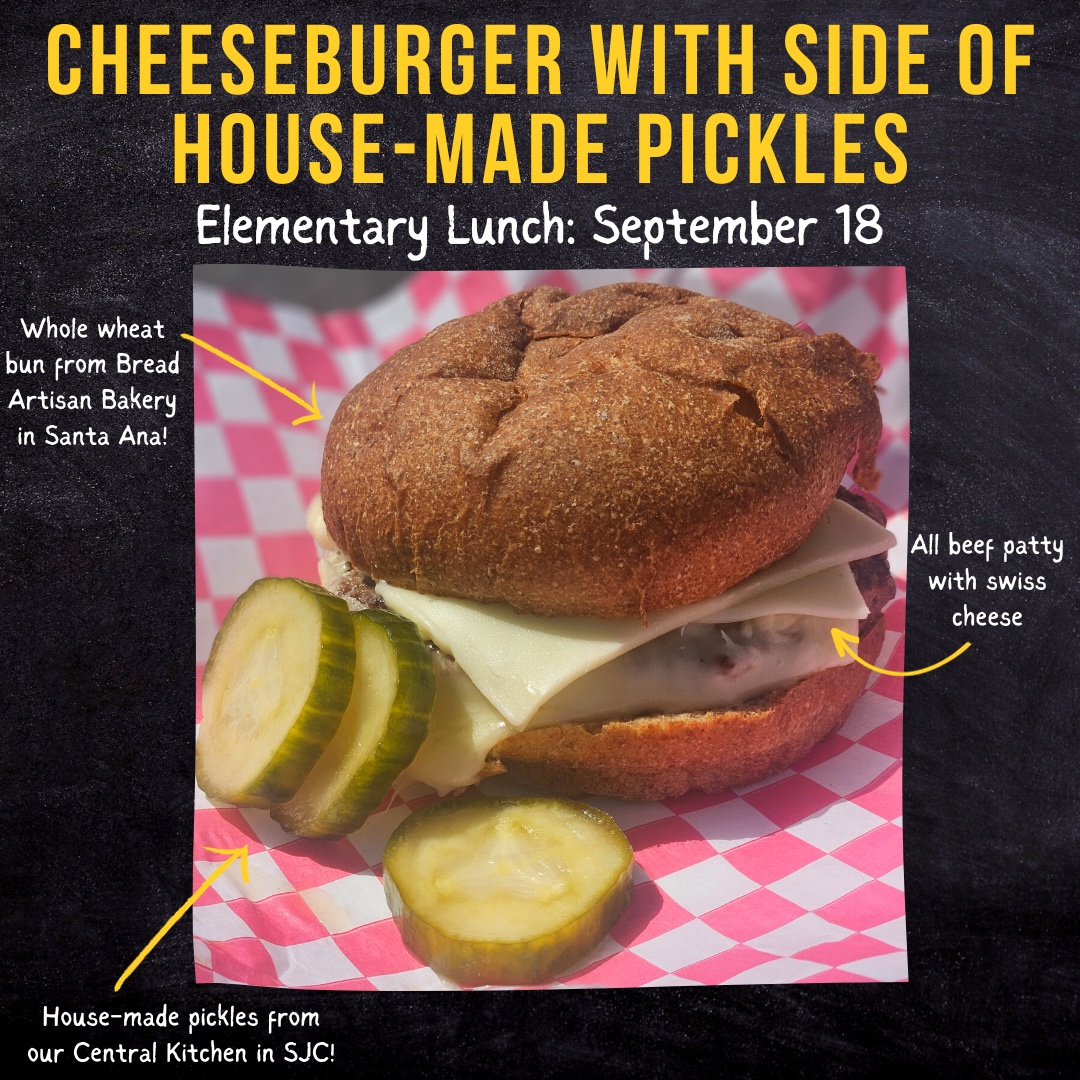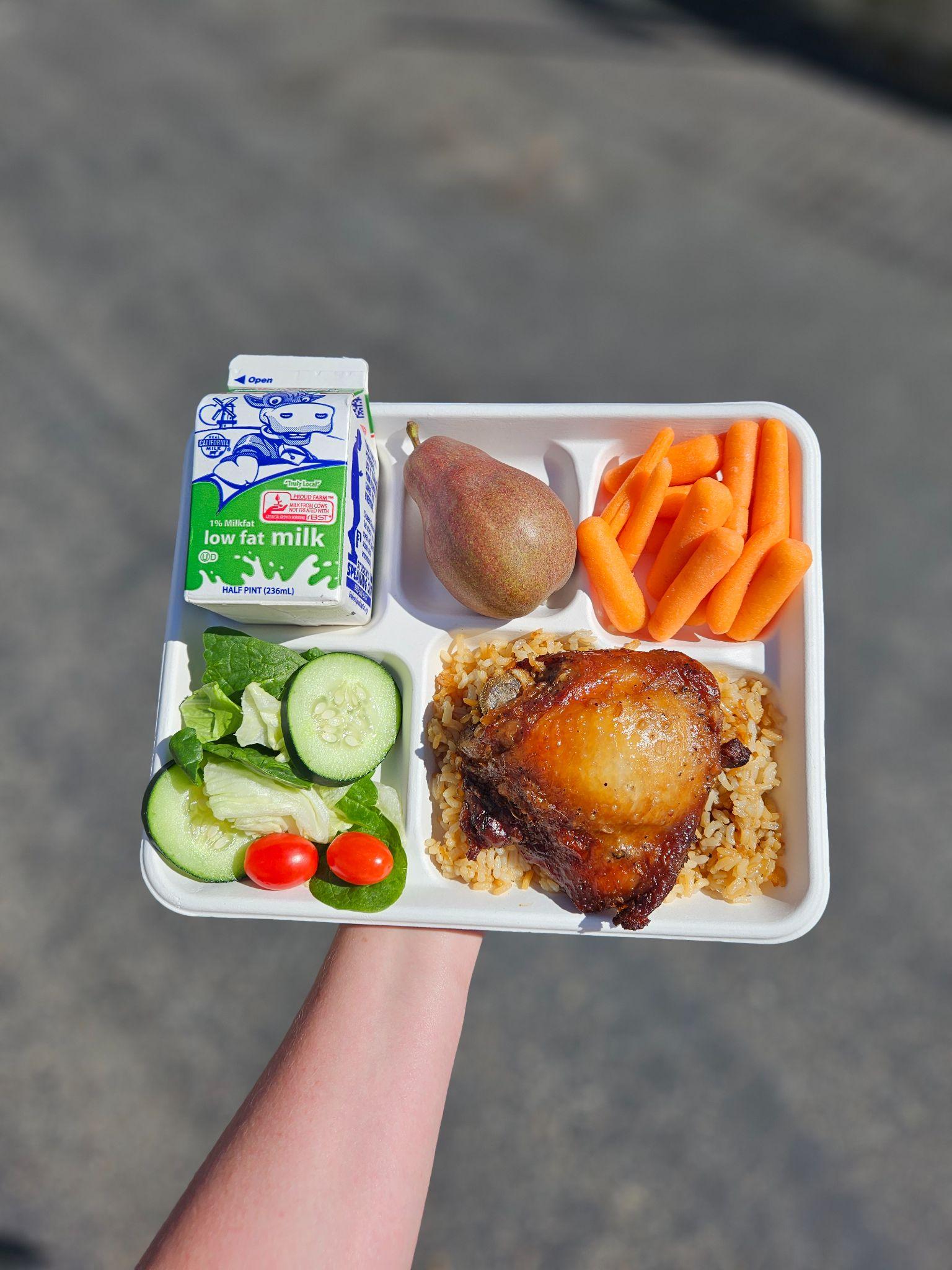Capistrano Unified School District
Students at Capistrano Unified School District are able to sample local kiwi berries, dig into house-made chili con carne, and add organic Persian cucumbers to their meals thanks to the efforts of Food and Nutrition Services and the engaged community. “Our goal at Capistrano Unified School District Food & Nutrition Services is to elevate meals served at school. Like many districts, we have limitations with kitchen infrastructure and the time students have to eat meals. For that reason, we strive to provide the highest quality food possible focusing on minimally processed products and being extremely picky with the products we bring in,” says Kristen Hilleman, Director of Food and Nutrition Services. Support for the program has grown coming out of the pandemic and with the passage of the Healthy School Meals for All legislation in California. They also partnered recently with Eat Real, an organization that helps districts identify and replace dishes that are high in sodium, sugar, and other byproducts of processed food manufacturing. As a result, they removed juice, high fructose corn syrup, artificial colors, and items containing >25 grams of added sugar from their menus. They also added new items, prioritizing minimally processed items, organic produce, locally grown produce, animal welfare-focused and environmentally friendly products, and house-made items.

Capistrano is a relatively affluent district, with active parents who regularly engage the nutrition team via Instagram and Facebook. According to Shannon Illingworth, the district’s Nutrition Specialist, “we strive to “unwrap” stigmas of school meals by providing menu transparency to parents.” The nutrition team introduced Mealviewer to increase menu transparency and streamline communications with parents and students. As with many menu planning softwares, Mealviewer allows nutrition teams to enter new menu ideas and substitutions to check for compliance with USDA and other standards. Once finalized, this information appears on a public, interactive website where parents and students can find all of the available details about a specific menu item – from its origin to its allergens. The team uses their monthly “Capo Crunch” newsletter sent to administrators, teachers, and parents to highlight seasonal produce or feature dishes and recipes from around the globe. Teachers have started bringing these menus and features into the classroom to educate students about health and different cultures and encourage them to take advantage of all the meal program has to offer.

Parents, students, and other partners wanted to see more local procurement for the meal program. Though Capistrano is next door to the Central Valley, it was harder than the nutrition team expected to trace the sources of their produce. Initially a request like this would take vendors about a month to figure out. The nutrition team has had greater success with smaller distributors and food hubs for whom traceability is not an issue. To search for local food hubs and farmers near your district, try the USDA’s local food finder. Shannon advises, “A great place to start is by creating a one-time special to put on the menu. Find something the students already like, for example a cheeseburger, and source a locally baked bun and/or humanely raised beef. Discover what seasonal produce is available and purchase basil to add to an existing pasta recipe. If an idea seems too big to accomplish, start small and grow it from there.”
